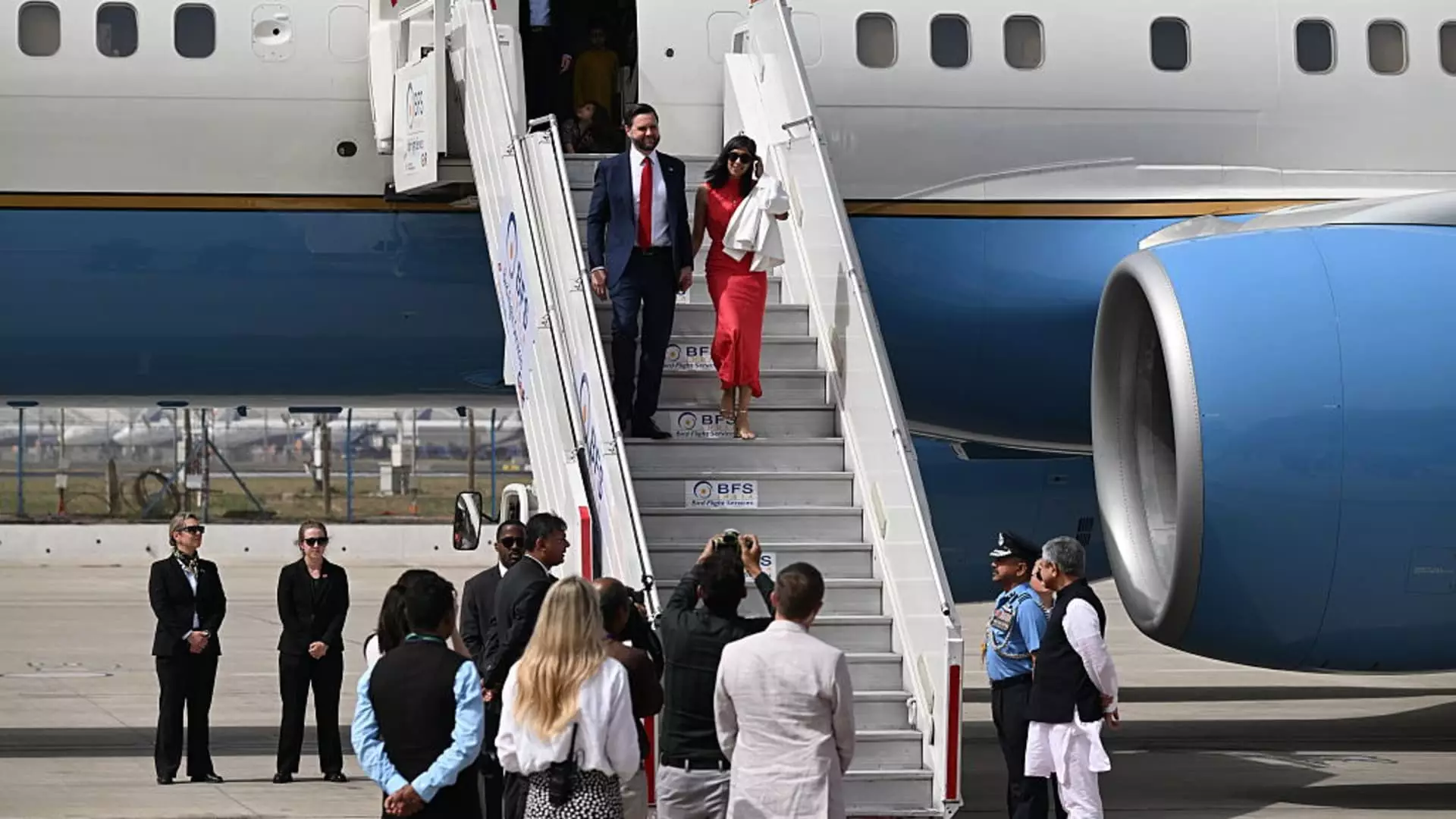The recent visit by U.S. Vice President JD Vance to India is not merely a diplomatic formality; it is a calculated maneuver steeped in significance. As he embarks on this four-day tour, it is crucial to not underestimate the complexities inherent in U.S.-India relations, particularly in this era of heightened geopolitical tension. With Vance’s background—rooted in a familial connection to Indian immigrants—this trip carries a personal as well as a professional narrative, intertwining familial heritage with international diplomacy. However, while he engages in cultural explorations, such as the majestic Taj Mahal and a festive wedding in Jaipur, the weight of his discussions with Prime Minister Modi is filled with pressing urgency.
A Fragile Economic Landscape
The backdrop of this visit is equally critical. New Delhi is maneuvering through a precarious economic landscape riddled with challenges posed by U.S. tariffs. With President Trump labeling India as a “tariff king,” the administration’s critique reflects deeper bureaucratic tensions that threaten to complicate bilateral trade. Vance’s presence in India signifies more than just good intentions; it represents an opportunity to rebuild trust and negotiate terms that could facilitate a significant trade deal. The timeline of achieving this deal within the “90-day pause” on tariff hikes announced by Trump illustrates an openness on India’s part to recalibrate tariff structures—something that should be welcomed, yet it remains fragile at best.
Strategic Imperatives in the Indo-Pacific
Vance’s visit also coincides with broader U.S. strategic interests in the Indo-Pacific region, particularly amid escalating U.S.-China tensions. The stakes are high as India positions itself as a key ally in counterbalancing China’s growing influence. This intersection of trade diplomacy and military cooperation illustrates the multifaceted nature of contemporary international relations. For India, aligning closely with the U.S. can expedite advancements in defense partnerships and procurement, including crucial armaments that enhance its strategic posture. This precarious yet vital partnership underscores the significance of Vance’s conversations with Modi, even as immediate outcomes appear elusive.
The Personal vs. Political Duality
However, one cannot overlook the personal dimension of Vance’s visit. His family ties to India add a layer of relatability that transcends political narratives. Yet, one might ask—how politically expedient is this connection in the grander scheme of things? While it nurtures a sense of connection, can it truly influence diplomatic negotiations when the reality is entrenched in economic and defense interests? This duality presents a fascinating dichotomy—Vance as the relatable figure vs. the Vice President striving to navigate a tumultuous political landscape.
Indications of Progress or Politically-Motivated Stunts?
Vance’s trip comes at a precarious time when officials predict that no formal agreements will be signed. Instead, discussions seem to revolve around setting the stage for future negotiations, which raises the question of whether this visit signifies genuine progress or is merely a politically-calculated public relations stunt. While the optimism from the Indian foreign ministry hints at a positive outlook, skepticism remains warranted. The overarching sentiment echoes a quest for tangible outcomes rather than mere symbolic gestures.
The Future of the U.S.-India Relationship
As Vance and Modi engage in dialogues that could affect millions on both sides of the Pacific, the spotlight is very much on what this visit will yield. India’s burgeoning economy and strategic location offer significant benefits to the U.S., yet the complexities of trade imbalances and tariff policies remain unresolved. The underlying tension in these relations demands a clear path forward; thus, Vance’s willingness to navigate this labyrinth of diplomacy will be scrutinized for its effectiveness.
While Vance’s visit carries potential for historical significance, one must approach this with cautious optimism. Navigating the fractured landscape of international diplomacy requires not just dialogue, but a genuine commitment to mutual benefit that transcends transactional politics. The true test of this visit will manifest in what unfolds beyond the ceremonial engagements and cultural festivities. Without substantial steps towards resolving existing tensions, this trip may ultimately serve as just another chapter in the lengthy saga of U.S.-India relations.


Leave a Reply